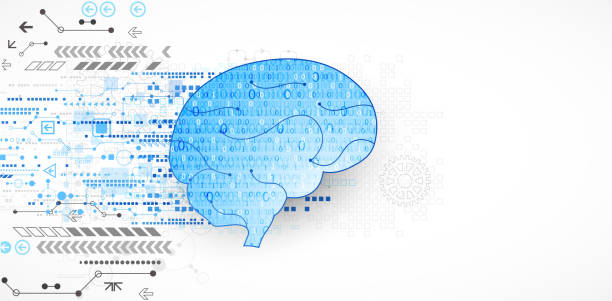What is an AI Robot and What are its Applications?
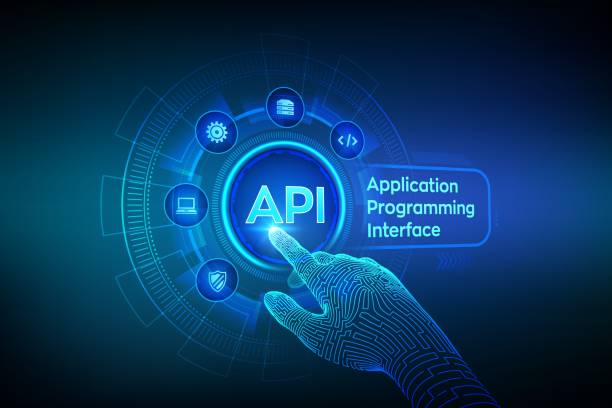
What is an AI Robot and What are its Applications?
#AI robot is a combination of two distinct fields: #robotics and #artificial intelligence.
In other words, intelligent robots are machines capable of processing information, learning, and making decisions based on received data, using complex algorithms.
These robots can be used in various fields including industry, medicine, customer services, and even entertainment.
An AI robot perceives its surroundings using various sensors and acts according to its programmed instructions.
The applications of AI robots are vast and diverse.
In industry, these robots can perform repetitive and dangerous tasks with greater precision and speed.
In medicine, AI robots can assist doctors in complex surgeries or play an effective role in diagnosing diseases by analyzing medical data.
Additionally, AI robots in customer service can answer frequently asked questions and help customers find the information they need.
The advantages of using AI robots include increased productivity, reduced errors, improved safety, and lower costs.
However, there are also challenges, such as ethical issues related to robot decision-making and concerns about human job displacement.
The AI robot is an emerging technology with the potential to transform many aspects of our lives.
With continuous advancements in artificial intelligence and robotics, AI robots are expected to play an increasingly important role in the future.
Dissatisfied with low sales on your e-commerce site?
Rasaw is your solution for a professional and high-selling e-commerce website.
✅ Significant increase in sales and revenue
✅ Easy and enjoyable shopping experience for customers
⚡ Get a free consultation from Rasaw now!
Differences Between AI Robots and Ordinary Robots
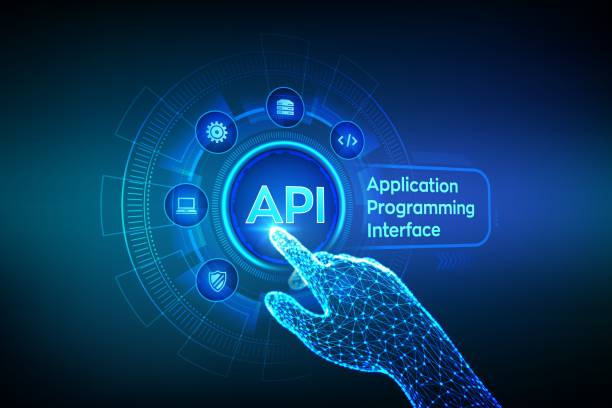
Differences Between AI Robots and Ordinary Robots
The main difference between AI robots and ordinary robots lies in their level of intelligence and learning capability.
Ordinary robots are typically programmed to perform a series of specific, predefined tasks and are not capable of adapting to new conditions or making independent decisions.
In contrast, AI robots, using machine learning algorithms and neural networks, are capable of learning from data, identifying patterns, and making intelligent decisions.
An AI robot can automatically adapt to new conditions and improve its performance, whereas ordinary robots require reprogramming.
For example, a typical industrial robot designed for welding can only perform that specific task, while an AI robot can improve welding quality by learning from data or even perform new tasks.
Another key difference between these two types of robots is their ability to interact with humans.
AI robots can interact naturally with humans using natural language processing and facial recognition, answering their questions or executing their commands.
In contrast, ordinary robots usually can only communicate with humans using buttons or simple user interfaces.
Thanks to artificial intelligence, AI robots are more flexible, intelligent, and capable of performing more complex tasks than ordinary robots.
However, ordinary robots are still widely used in many industries and applications, especially where high precision and speed are required for repetitive tasks.
AI robots have a bright future, but ordinary robots will also maintain their place.
Main Components of an AI Robot
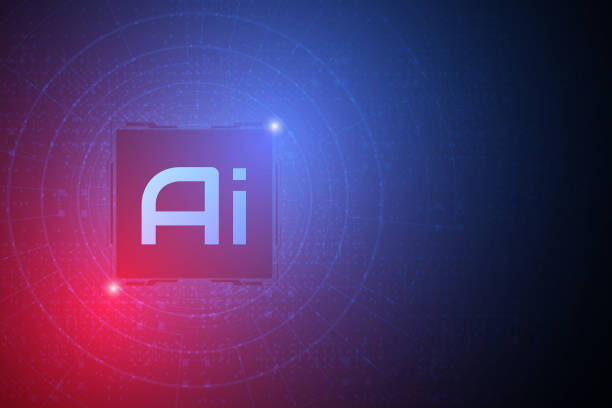
Main Components of an AI Robot
An AI robot consists of several main parts, each responsible for a specific task.
These components include sensors, processors, actuators, a power source, and AI software.
Sensors collect information from the surrounding environment, processors analyze this information and make necessary decisions, actuators control the robot’s movement and actions, the power source supplies the robot’s energy needs, and AI software implements learning and decision-making algorithms.
Sensors play a very important role in the performance of an AI robot.
These sensors can include cameras, microphones, temperature sensors, pressure sensors, proximity sensors, and so on.
Information collected by the sensors is sent to the processors for analysis and processing.
Processors typically use powerful computers or embedded systems.
Actuators are responsible for converting processor decisions into motion and action.
These actuators can include motors, pumps, valves, etc.
AI software is the beating heart of an AI robot and implements machine learning algorithms, neural networks, and other AI techniques.
This software allows the robot to learn from data, identify patterns, and make intelligent decisions.
With the help of these components, an AI robot can autonomously perform complex tasks and interact with its environment.
| Component | Function |
|---|---|
| Sensors | Gathering information from the environment |
| Processors | Processing information and decision-making |
| Actuators | Converting decisions into motion |
| AI Software | Implementing learning algorithms |
AI Algorithms Used in Robots
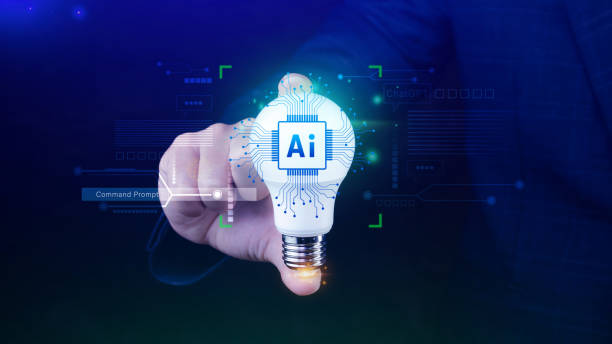
AI Algorithms Used in Robots
AI algorithms play a key role in the performance of intelligent robots.
These algorithms allow robots to learn from data, identify patterns, make intelligent decisions, and interact with their environment.
Some of the most important AI algorithms used in robots include machine learning, neural networks, natural language processing, and computer vision.
Machine learning enables robots to learn from data and improve their performance without explicit programming.
Neural networks, inspired by the structure of the human brain, are used to solve complex problems such as pattern recognition, prediction, and control.
Natural language processing allows robots to understand human language and interact naturally with humans.
Computer vision allows robots to process images and videos and identify objects, people, and scenes.
AI algorithms enable robots to autonomously perform complex tasks and operate in dynamic and unpredictable environments.
With continuous advancements in AI, new and more advanced algorithms are expected to be developed for robots, significantly enhancing their performance and capabilities.
The AI robot is a developing technology.
AI robots are capable of learning from experience and improving their performance over time.
This feature allows them to operate effectively in complex and dynamic environments and successfully perform difficult tasks.
Are you tired of your company’s website not being seen as it should be, and losing potential customers? Solve this problem forever with professional and effective website design by Rasaw!
✅ Increase brand credibility and gain customer trust
✅ Attract targeted sales leads
⚡ Contact us now for a free consultation!
Challenges in Developing and Implementing AI Robots
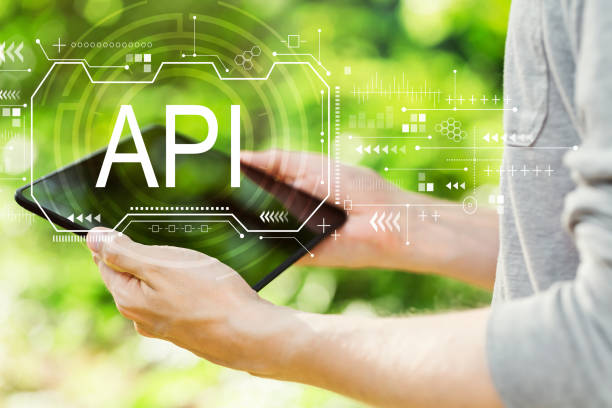
Challenges in Developing and Implementing AI Robots
The development and implementation of AI robots face numerous challenges.
Some of these challenges include technical, ethical, social, and economic issues.
Technically, developing robust and reliable AI algorithms, building advanced sensors and actuators, and integrating these components into a unified system is challenging.
Ethically, robot decision-making in complex and sensitive situations, robot accountability for their actions, and protecting individual privacy are important issues that need to be addressed.
Socially, concerns about human job displacement by robots, the impact of robots on social and cultural relations, and equitable access to AI robot technology are significant challenges.
Economically, the high costs of research and development, production, and maintenance of robots, and the need to train a specialized workforce to work with robots are important challenges.
AI robots require investment.
To overcome these challenges, cooperation between researchers, industry, policymakers, and civil society is needed.
Specific ethical and legal standards for the development and use of AI robots must be established, appropriate training programs must be designed to prepare the workforce to work with robots, and supportive policies must be adopted to promote the development and use of AI robots in various industries.
AI robots are a great transformation.
By overcoming these challenges, the high potential of AI robots can be used to improve human lives and solve societal problems.
The Future of AI Robots and Their Impact on Human Life

The Future of AI Robots and Their Impact on Human Life
The future of AI robots is very bright and full of potential.
With continuous advancements in artificial intelligence, robotics, and other related technologies, robots are expected to play an increasingly important role in human life and be employed in various fields including industry, medicine, services, education, and entertainment.
Robots can perform repetitive and dangerous tasks with greater precision and speed, assist doctors in diagnosing and treating diseases, provide better customer services, personalize education, and offer new forms of entertainment for humans.
However, it should be noted that the development and use of AI robots can also have negative impacts.
For example, human job displacement by robots can lead to increased unemployment and inequality, robot decision-making in complex and sensitive situations can create ethical issues, and the use of robots in warfare can have catastrophic consequences.
AI robots can transform our lives.
To maximize the benefits and minimize the risks of AI robots, careful planning and collaboration among researchers, industry, policymakers, and civil society are needed.
Specific ethical and legal standards for the development and use of AI robots must be established, appropriate training programs must be designed to prepare the workforce to work with robots, and supportive policies must be adopted to promote the development and use of AI robots in various industries.
With proper planning and comprehensive cooperation, AI robots can be used to improve human lives and solve societal problems.
Case Study: Successful AI Robots in Various Industries

Case Study: Successful AI Robots in Various Industries
AI robots are widely used in various industries and have been very successful in many cases.
In the automotive industry, robots are used for repetitive and precise tasks such as welding, painting, and assembling parts.
These robots can work faster and more accurately than humans, improving product quality.
In the medical industry, robots are used for complex surgeries, assisting nurses in patient care, and distributing medications.
These robots can operate with higher precision than humans and reduce surgical risks.
AI robots have brought about a huge transformation in industry.
In the service industry, robots are used to provide customer services, answer questions, and guide individuals.
These robots can be available 24/7 and assist customers anytime, anywhere.
In the agricultural industry, robots are used for planting, cultivation, and harvesting crops.
These robots can work with higher precision than humans and minimize water and fertilizer consumption.
AI robots are everywhere.
These are just a few examples of successful AI robot applications in various industries.
With continuous advancements in artificial intelligence and robotics, robots are expected to play a more significant role in the future and be employed in new fields.
AI robots help improve conditions.
| Industry | Application | Benefits |
|---|---|---|
| Automotive | Welding, painting, assembly | Increased speed and accuracy, improved quality |
| Medical | Surgery, patient care, drug distribution | Reduced surgical risks, improved care |
| Services | Answering questions, guidance | 24/7 access, improved services |
| Agriculture | Planting, cultivation, harvesting | Reduced water and fertilizer consumption, increased productivity |
Key Considerations in Designing and Developing AI Robots
![]()
Key Considerations in Designing and Developing AI Robots
Designing and developing AI robots is a complex and multifaceted process that requires attention to various key considerations.
These considerations include precisely defining the robot’s goal and tasks, selecting appropriate AI algorithms, designing suitable hardware and software architectures, and continuously evaluating and improving the robot’s performance.
Before starting the design and development of a robot, its goal and tasks must be precisely defined.
It should be specified what the robot needs to do, in what environment it should operate, and what its limitations are.
An AI robot must be goal-oriented.
Selecting appropriate AI algorithms plays a very important role in the robot’s performance.
Algorithms must be chosen that are compatible with the robot’s goal and tasks and can work effectively with the available data.
Designing suitable hardware and software architectures is also very important.
The hardware architecture must be able to meet the robot’s processing and sensing needs, and the software architecture must be able to implement AI algorithms effectively.
The AI robot is intelligent.
Continuous evaluation and improvement of the robot’s performance are also very important.
The robot’s performance should be regularly evaluated, and changes in its design and algorithms should be made if necessary.
By considering these key points, successful AI robots can be designed and developed that can assist humans in various fields.
AI robots help improve our lives.
Did you know that customers’ first impression of your company is your website? Boost your business credibility with a powerful corporate website from Rasaw!
✅ Exclusive and eye-catching design tailored to your brand
✅ Improved user experience and increased customer attraction
⚡ Get a free consultation now!
Ethical Issues Related to AI Robots
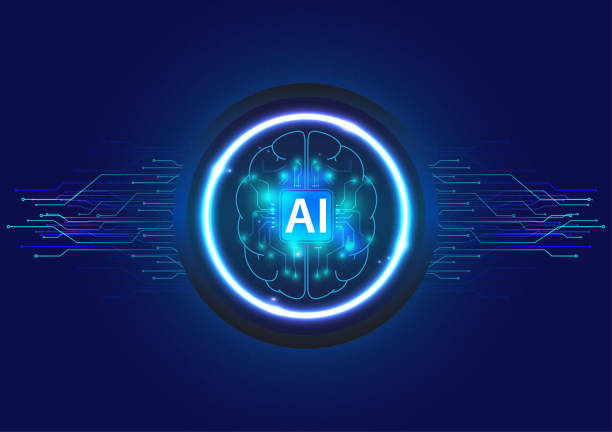
Ethical Issues Related to AI Robots
The development and use of AI robots bring with them numerous ethical issues.
Some of these issues include robot accountability for their actions, protecting individual privacy, discrimination and inequality, and the security and control of robots.
If an AI robot makes a mistake and causes damage, who is responsible? Is the robot’s manufacturer, owner, or the robot itself responsible? What can an AI robot do in this regard?
AI robots can collect a lot of information about individuals.
How can this information be protected and prevented from misuse? AI robots can inadvertently reinforce discrimination and inequality.
How can this be prevented? AI robots may be misused or hacked.
How can the security and control of robots be ensured? An AI robot must be secure.
These are just a few examples of ethical issues related to AI robots.
To resolve these issues, discussion and exchange of ideas among researchers, industry, policymakers, and civil society are needed.
Specific ethical and legal standards for the development and use of AI robots must be established, and appropriate education must be provided to raise public awareness about ethical issues related to AI robots.
An AI robot is a powerful tool.
By considering the ethical issues related to AI robots, this technology can be used responsibly and ethically, and its benefits can be reaped.
An AI robot must be ethical.
Educational Resources and Tools for Learning AI Robots
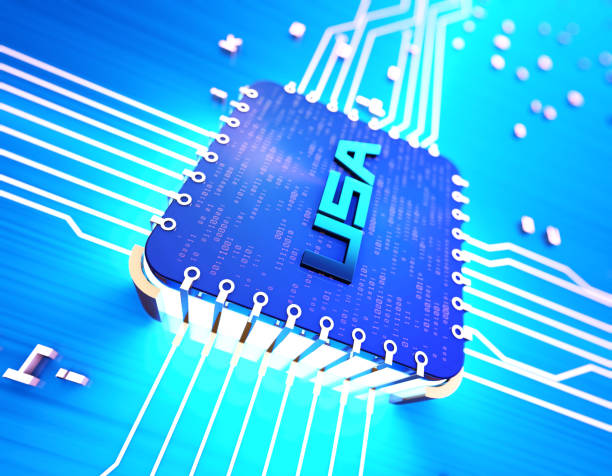
Educational Resources and Tools for Learning AI Robots
Learning about AI robots requires access to appropriate educational resources and tools.
Fortunately, today many educational resources and tools are available for learning AI robots, including books, online courses, video tutorials, blogs, forums, and simulation software.
Many books exist on AI robots covering basic and advanced concepts.
Some of these books are suitable for beginners, while others are designed for experienced individuals.
Many online courses on AI robots are offered by universities, educational institutions, and private companies.
These courses can be available for free or for a fee.
Many video tutorials on AI robots are available on websites like YouTube and Aparat.
These tutorials can help you learn concepts in a practical way.
Many blogs and forums on AI robots exist that you can use to gain information, exchange ideas, and receive help.
AI robots are for everyone.
Many simulation software programs for AI robots are available that you can use to test algorithms and design robots.
Some of these software programs are free, while others require payment.
By using these educational resources and tools, you can effectively learn about AI robots and develop your skills in this field.
AI robots are our future.
Frequently Asked Questions
| Question | Answer |
|---|---|
| What is an AI robot? | An AI robot is a machine capable of understanding its environment, reasoning, learning, and making decisions to perform tasks autonomously. |
| What is the difference between ordinary robots and AI robots? | Ordinary robots perform repetitive tasks based on pre-programming, while AI robots can learn from experience, interact dynamically with their environment, and even behave in a way that resembles human intelligence. |
| What are the main applications of AI robots? | They are used in industries (manufacturing, assembly), medicine (surgery, diagnosis), services (customer support, domestic), exploration (space, underwater), and many other fields. |
| What technologies are used in the construction of AI robots? | Machine Learning, Computer Vision, Natural Language Processing, Deep Learning, and Robotics are among the key technologies. |
| Can AI robots have emotions? | Currently, robots do not have emotions in the human sense. They can identify and react to emotions, but they do not experience emotions themselves. |
| What are the main challenges in developing AI robots? | Safety, reliability, ethics, autonomy, adaptability to complex environments, and natural human interaction are significant challenges. |
| How are AI robots trained? | They are typically trained using large amounts of data, machine learning, and deep learning algorithms to identify patterns and make decisions. |
| Examples of AI robots in daily life? | Smart robotic vacuum cleaners, customer support chatbots, self-driving cars, and surgical robots in hospitals. |
| Are AI robots a threat to human jobs? | Some repetitive jobs may become automated, but at the same time, robots can increase productivity and create new jobs in the development, maintenance, and supervision of these systems. |
| How is the future of AI robots predicted? | They are expected to become smarter, more autonomous, and capable of performing more complex tasks, and to interact more closely with humans in various environments. |
And other advertising agency services by RasawWeb in the field of advertising
- Smart Digital Branding: An innovative service to increase user engagement through the use of real data.
- Smart Social Media: Revolutionize click-through rates with the help of marketing automation.
- Smart UI/UX: Designed for businesses looking to increase click-through rates through marketing automation.
- Smart Direct Marketing: A creative platform for improving online growth with intelligent data analysis.
- Smart UI/UX: A combination of creativity and technology for digital branding through precise audience targeting.
And over hundreds of other services in the field of internet advertising, advertising consultation, and organizational solutions
Internet Advertising | Advertising Strategy | Advertorials
Sources
Introduction to AI Robots on Digiato
Comprehensive Guide to AI Robots on Zoomit
Latest AI Developments on ICT.ir
What is an AI Robot? – Persian Tech Blog
? Ready to revolutionize your business in the digital world? RasawWeb Digital Marketing Agency offers comprehensive services including custom website design, SEO, and online advertising, paving your way to success.
📍 Tehran, Mirdamad Street, next to Central Bank, Kazeroun Jonoubi Alley, Ramin Alley No. 6

